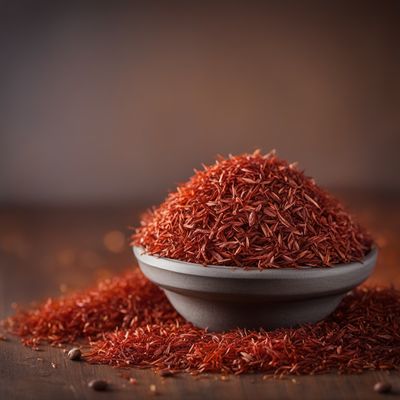
Ingredient
Rooibos and similar-
Rediscovering Nature's Infusion: The World of Rooibos and Similar Herbal Teas
Rooibos and similar herbal teas are known for their distinct flavors and soothing properties. Rooibos tea, also known as red bush tea, has a naturally sweet and nutty taste, while similar herbal teas, such as chamomile and peppermint, offer their own unique flavor profiles. These teas are caffeine-free and are often enjoyed for their calming and relaxing effects.
Origins and history
Rooibos tea originates from the Cederberg region of South Africa, where it has been consumed for centuries by the indigenous Khoisan people. It was later discovered by European settlers and gained popularity as a caffeine-free alternative to traditional tea. Similar herbal teas, such as chamomile and peppermint, have been used for their medicinal properties in various cultures around the world for centuries.
Nutritional information
Rooibos tea is rich in antioxidants and polyphenols, which help protect against oxidative stress and inflammation. It is also low in tannins, making it a gentle and non-astringent option for those with sensitive stomachs. Chamomile tea is known for its calming properties and potential benefits for sleep and digestion. Peppermint tea is refreshing and can aid in digestion and relieve symptoms of indigestion.
Allergens
Rooibos and similar herbal teas are not known to be common allergens. However, individuals with allergies to plants in the Asteraceae family, such as ragweed or daisies, may experience cross-reactivity and should exercise caution when consuming chamomile tea.
How to select
When selecting rooibos and similar herbal teas, look for high-quality loose-leaf teas or tea bags made from pure ingredients. Avoid teas that contain artificial flavors or additives. Opt for organic or sustainably sourced teas whenever possible to support ethical and environmentally friendly practices.
Storage recommendations
To maintain the freshness and flavor of rooibos and similar herbal teas, store them in a cool and dry place, away from direct sunlight and moisture. Keep the tea leaves or tea bags in an airtight container to prevent exposure to air and humidity. Proper storage will help preserve the aroma and taste of the teas for an extended period.
How to produce
Rooibos tea can be grown in home gardens or small-scale farms with the right conditions. It requires well-drained soil, ample sunlight, and a moderate climate to thrive. Chamomile and peppermint can also be grown at home, either in gardens or in pots. They prefer well-drained soil and partial shade. Growing these herbs can be a rewarding experience for tea enthusiasts and gardeners alike.
Preparation tips
Rooibos tea can be enjoyed on its own as a soothing and caffeine-free beverage, served hot or cold. It can also be used as a base for flavored teas, such as vanilla or citrus-infused rooibos. Chamomile tea is commonly enjoyed before bedtime to promote relaxation and sleep. It can also be used as a natural remedy for digestive issues. Peppermint tea is refreshing and can be enjoyed hot or cold. It is often used to aid digestion and relieve symptoms of indigestion.
Culinary uses
Rooibos tea is commonly used as a base for flavored teas, such as chai or fruit-infused blends. It can also be used to create unique and aromatic iced teas and herbal tea blends. Chamomile tea is often enjoyed on its own as a calming and soothing beverage. It can also be used to enhance the flavor of desserts, such as cakes and cookies. Peppermint tea is commonly used as a digestive aid and is a popular choice for herbal tea blends and refreshing summer beverages.
Availability
Rooibos tea is primarily cultivated in South Africa, with the Cederberg region being the main production area. Chamomile is grown in various regions around the world, including Europe, Egypt, and the United States. Peppermint is cultivated in many countries, with the United States being one of the major producers. Rooibos and similar herbal teas are widely available in supermarkets, health food stores, and specialty tea shops.

